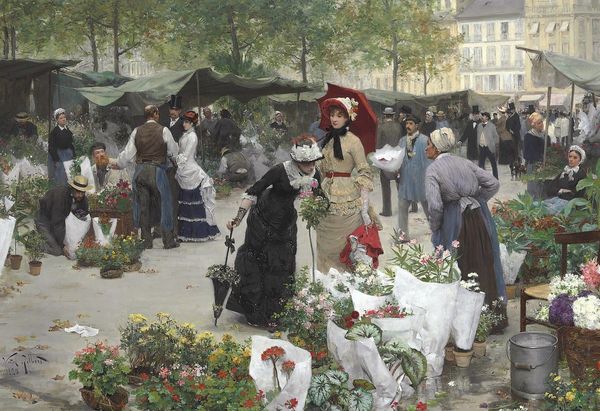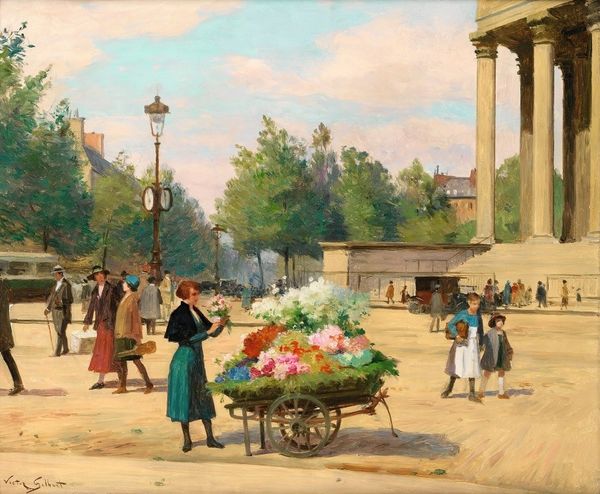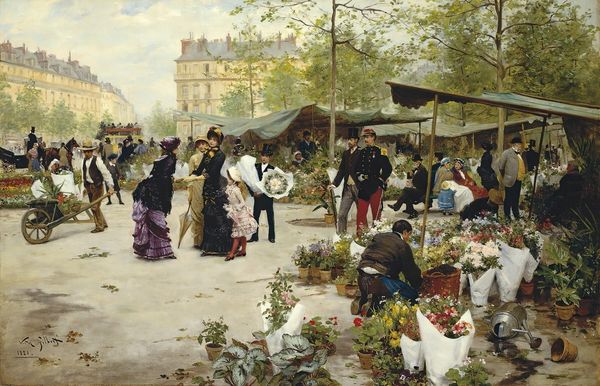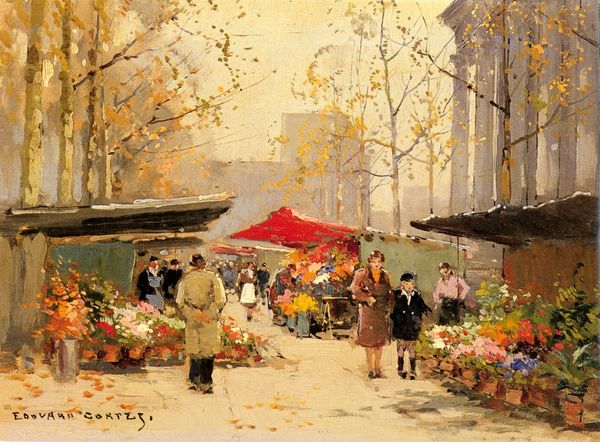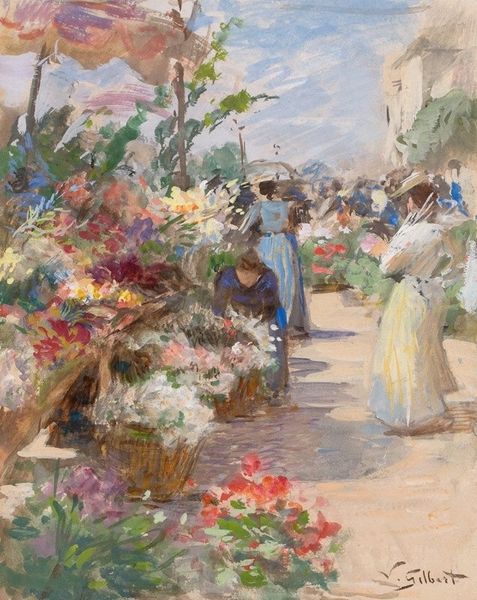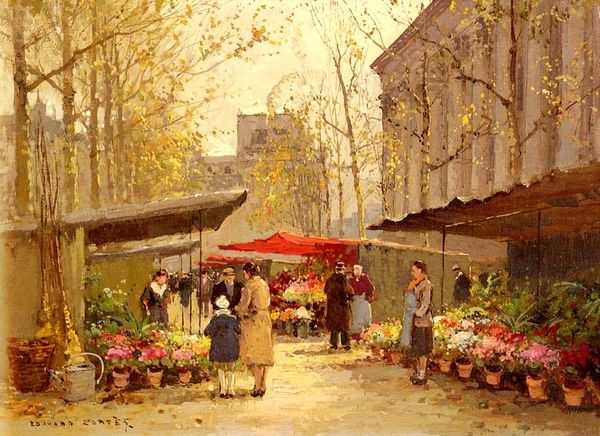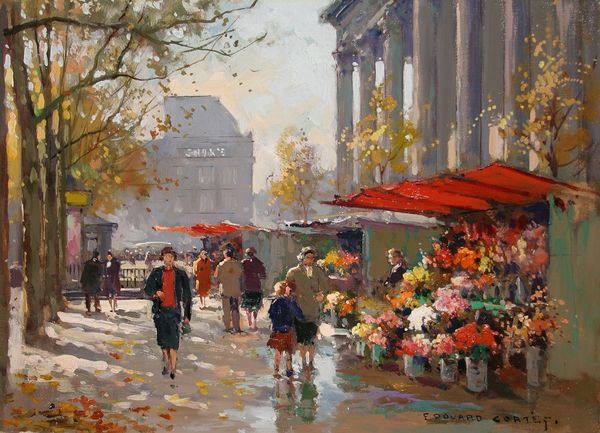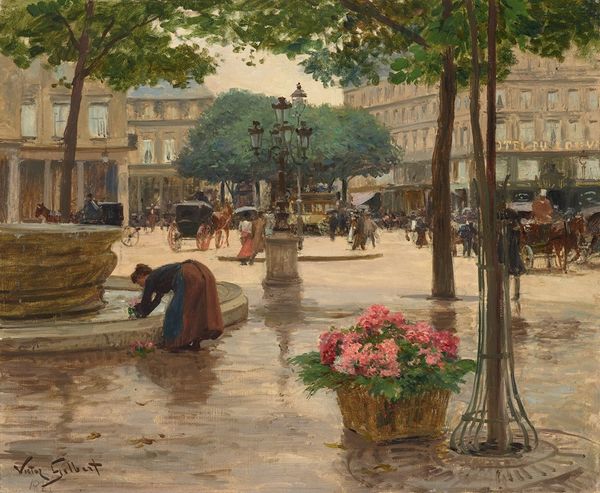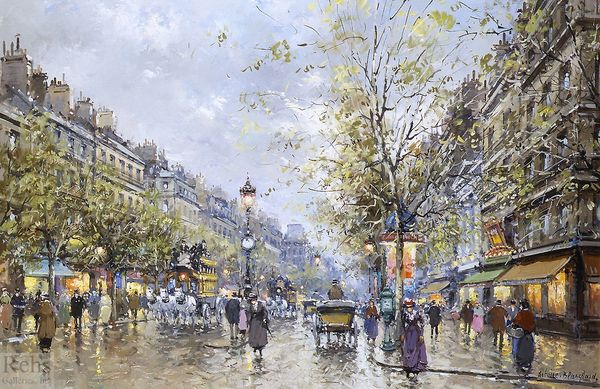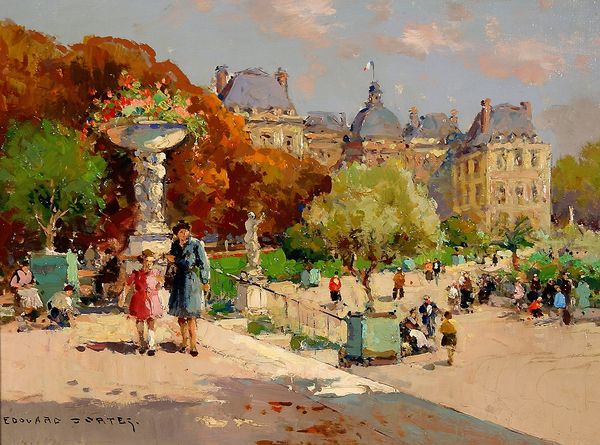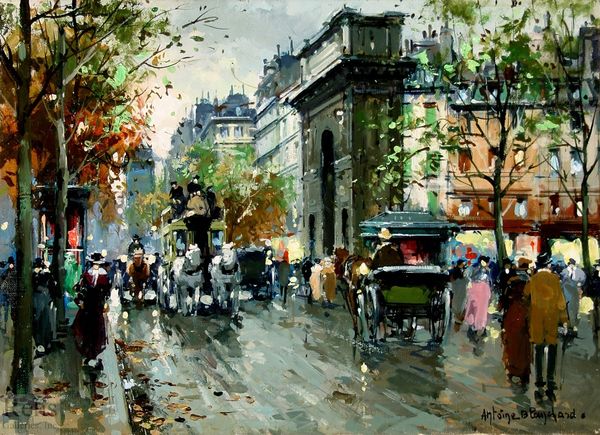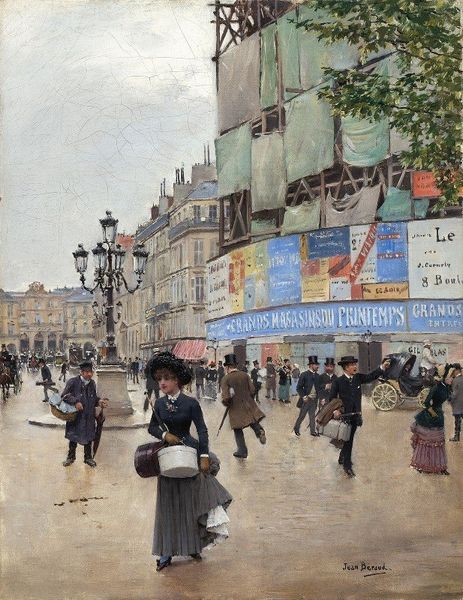
Copyright: Public Domain: Artvee
Curator: This painting, "Damer, Der K\u00f8ber Blomster P\u00e5 Amagertorv" by Paul Fischer, created in 1924, showcases a vibrant flower market scene rendered in oil on canvas. I'm immediately struck by how contemporary it feels despite being almost a century old. The composition seems quite traditional, almost like a staged photograph, but it offers such a wonderful snapshot of city life. How do you respond to it? Editor: It's certainly a charming image. I noticed that this oil painting depicts a very detailed and precise depiction of everyday life and how consumerism affects even leisurly strolling in a flower market! What's especially interesting is Fischer's choice of the flower market as a point of convergence. What might he be trying to tell us about 1920s Denmark? Curator: Absolutely. Flowers as commodities. Their availability marks not just the season, but also a level of economic surplus within society, allowing for aesthetic, rather than strictly functional, purchases. What kind of labor produces and cultivates the blooms, and for whom? Also, consider the setting. Cityscapes like Amagertorv were sites of growing industry, where commodities were consumed, displayed and desired. Fischer's use of a public, consumer space isn't accidental here. How does the medium—oil on canvas—play into that idea of the commodification of leisure, or the beautification of urban experience? Editor: I see your point about flowers as commodities here...it certainly isn't only a painting about everyday leisurly strolls, it's so much more! I had not considered how oil paints contribute to this idea of leisure either... Curator: Fischer's technique uses quick brushstrokes typical of Impressionism and realism, applied with skilled handling of the material itself—oil paint. In effect he mirrors in artistic production that same spirit he identifies as the cultural moment he attempts to capture. So in fact we might consider, who profits from beautiful things? And at what cost to laborers and the environment that yields them? Editor: Thank you for opening my eyes to these subtleties and prompting me to see beyond the surface of a genre painting!
Comments
No comments
Be the first to comment and join the conversation on the ultimate creative platform.

